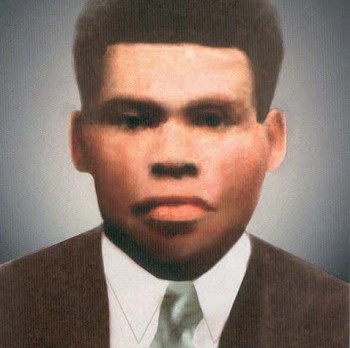Many wagered he would become a priest. Instead, he not only started a family but also lay down his life to defend marriage.
To place this World Youth Day patron, this week we travel to Papua New Guinea, to the city of Rakunai (near Rabual) where Peter To Rot was born in 1912. His father, Angelo, an influential and charismatic chieftain who was among the first converts to Catholicism, played a pivotal role in spreading the Gospel in his land. Peter’s mother, Maria, was a fervent Catholic who knew how to form the family as the first European missionaries had taught.
From his father, Peter inherited the qualities of a leader; from his mother, a particular sensibility for religion. Perhaps it was this happy fusion of natural gifts, coupled with a wholly unique devotion and inclination toward study, which led the local missionary priest to believe he had identified the seeds of a priestly vocation in him, and to consider sending him to Europe for studies. It was his father (providentially, in hindsight, we might say) who decided Peter’s future course as a lay leader and catechist. Peter therefore prepared himself for this ministry, thus confirming everything others had seen in him: a surprising ability as a teacher, a keen knowledge of the Bible, the ability to relate to everyone, and a powerful influence over others, especially young people.
In short, he was a born leader. At just 21 years of age, Peter was already an invaluable catechist and served as the missionary parish priest’s right hand man and collaborator. In 1936, at the age of 24, Peter married Paula la Varpit, a 16-year old who seemed to have been made just for him. For she shared his faith, his ideals, his aspirations and his commitment. Theirs was a union sustained by daily prayer and the reading of the Bible: their home was imbued with a lived faith that was first witnessed and then passed on to their three children.
Over the years Peter’s spirituality matured, his natural ability to relate to others was transformed into a kind and gracious availability to all, he increasingly took on a role as an undisputed leader: in addition to winning the esteem and appreciation of others, he also won their love.
People realized that Peter lived what he taught and they admired his strength of character, his integrity and the generosity he showed toward others. In 1942, Japanese imperial forces attacked and occupied the entire region and immediately began targeting the religion that had been brought by Westerners: all European missionaries were captured and interned in concentration camps, and all Catholic chapels were destroyed. The only person left “in the field” was Peter: first, because he was a native and second, because he was a layman and therefore not held on the same par with the missionaries the Japanese wanted to strike. With great ease and simplicity, he took charge of the community, yet without a parish priest: he baptized, visited the sick and the dying, assisted at marriages, and protected and guarded the Holy Eucharist. He knew the risks, but he was utterly convinced of the need “to give primacy to the things of God.”
The Japanese watched him closely, aware that he was the worst of enemies, the one reference point for Catholics in the area.
Things turned very bad for Peter when he took a clear stance against the decision of Japanese authorities to introduce polygamy: unity and indissolubility are essential characteristics of Catholic marriage, and Peter repeatedly and forcefully proclaimed this truth with the power of John the Baptist, who from his prison cell had denounced Herod’s sin of adultery.
Amid great suffering yet as constant as ever, he denounced even his own brother who had taken a second wife. Peter knew that in doing so he was irrevocably marking his fate, but with great serenity he told everyone: “It is beautiful to die for the faith.”
On Christmas 1944, Japanese officials arrested and imprisoned him in a concentration camp. There, his serenity would only be disturbed at the thought of his community being without a leader. Every attempt to have him released failed, even one organized by Methodists in cooperation with several Catholics.
The Japanese wanted quickly to rid themselves of this uncomfortable witness of the Gospel. One night in July 1945, a Japanese doctor accompanied by two officials killed him by lethal injection. A martyr for the faith and in defense of marriage, the catechist Peter To Rot, “a devoted husband, a loving father and a dedicated catechist,” was beatified by Pope John Paul II on January 17, 1995.

